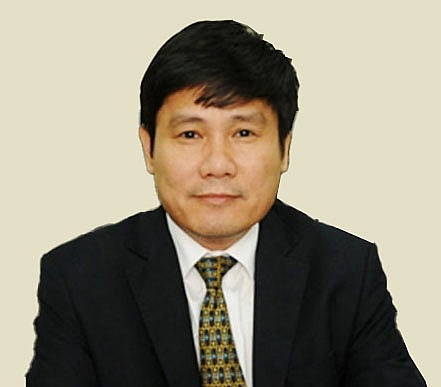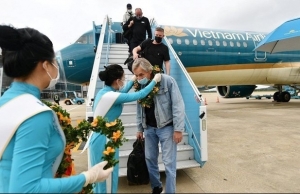A steep ascent ahead to boost interest in Vietnam’s aviation
Looking at the picture of foreign investment in the aviation sector, what are the most attractive areas?
 |
| Dinh Viet Thang, director of the Civil Aviation Authority of Vietnam |
There have been several categories attracting foreign investment in the aviation sector over the past years, making them important highlights.
Firstly, international airlines have invested in Vietnam by owning shares of domestic airlines. Next, ancillary companies in the aviation industry, such as companies providing meals and goods, have attracted the attention of foreign investors.
Furthermore, investing in training and research is an important part of the aviation industry. Foreigners are interested in building aviation training schools, as well as research and development centres.
Vietnam is also a popular tourist destination in Southeast Asia and aviation is an important part of the tourism industry. Foreign investors have put money into travel agencies and airlines serving the tourism industry.
While being attractive to foreign businesses, the numbers are not as much as expected, especially in terms of infrastructure.
How have legal reforms affected the aviation market and foreign investment in particular?
Vietnam’s aviation market has undergone many legal reforms. These reforms have positively impacted the aviation market by enhancing competition, safety management, transparency and accountability of companies, and reducing barriers to foreign funding.
Specifically, legal reforms have increased competition in Vietnam’s aviation industry, enabling local and international airlines to operate in a fair competition.
The legal reform of aviation safety has helped improve the quality and ensure the safety of aviation operations. Legal reforms have also made it easier for companies to implement regulations on disclosure of information, financial statements, and liability.
Foreign investment in aviation is still modest compared to its potential. What are the reasons for this?
Indeed, the potential in the aviation sector is huge. However, it has not been tapped effectively because there are still a number of reasons.
Firstly, the infrastructure is not fully developed. Although there have been many improvements, the aviation infrastructure in Vietnam has not developed much, especially at the local airports.
Secondly, although there have been many legal reforms, regulations still have shortcomings. It is necessary to continue reform to improve specialised legal provisions.
There are some lessons Vietnam could learn from other regional countries. Singapore has a modern airport system and the participation of many major airlines. It has focused on developing international routes and enhancing service quality to attract customers. Malaysia and Thailand have also developed diverse international airport systems, with the participation of many international airlines. They have also focused on attracting tourists, strengthening safety management, and developing international routes.
With the current condition, what is the orientation of foreign investment attraction in the aviation sector in the coming time?
Firstly, Vietnam needs to invest in building and upgrading existing airports to meet the growing needs. In addition, it is necessary to focus on the development of airports in key economic regions.
The second is to improve service quality. Vietnam needs to strengthen human resource training in the aviation sector, especially in airport management and operation, flight safety and aircraft maintenance. At the same time, it is necessary to have policies to encourage businesses to improve service quality to attract customers.
The third aspect is to diversify international routes. Vietnam needs to promote the country’s image and develop new international routes to attract tourists from different markets, while focusing on expanding routes to tourist attractions such as Japan, South Korea, China, Australia, and Europe.
A fourth factor is to provide supporting policies, continuing to develop favourable supporting policies for foreign-invested enterprises, and ensuring an enabling legal and business environment for foreign backers.
Next up is cooperation with the investors themselves. Vietnam needs to look for opportunities to cooperate with them to share experience and technology and strengthen partnerships with companies and major airlines in the world.
Furthermore, Vietnam can focus on developing new products and services to attract customers and enhance the brand value of the airline industry. These products and services may include all-in-one tour packages, new airport amenities, flights to new locations, and others. When passengers fly a lot, airlines will also develop, and there will be many more interested investors.
Finally, Vietnam needs to strengthen the competitiveness of domestic aviation enterprises. Businesses need to improve service quality, reduce operating costs, and improve operational efficiency.
 | New routes and deals offer impetus for domestic airlines Vietnam’s aviation market is trying to warm up rapidly as the world tries to move back to some kind of normality in the face of vaccine arrivals and successful domestic human vaccine trials. |
 | Vietnam’s aviation ready to fully recover international flights The Vietnamese aviation industry is currently ready in all aspects to operate the entire international flight network like before the COVID-19 outbreak, the Civil Aviation Authority of Vietnam (CAAV) has told Deputy Transport Minister Le Anh Tuan. |
 | New planes and routes as aviation picks up With a promising outlook in the post-pandemic era, international aircraft manufacturers are seeking to expand their partnerships in Vietnam’s burgeoning aviation market to tap into its growing demand for aircraft and related tech, as well as to expand their supply chain. |
What the stars mean:
★ Poor ★ ★ Promising ★★★ Good ★★★★ Very good ★★★★★ Exceptional
Related Contents
Latest News
More News
- Global partnerships key to Vietnam’s IFC development (December 26, 2025 | 16:18)
- Vingroup pulls out of bid to invest in North-South high-speed railway (December 26, 2025 | 11:42)
- Strengthening supply chains through trade promotions and customs reform (December 24, 2025 | 14:00)
- PM orders investment model for North–South high-speed rail (December 22, 2025 | 17:43)
- LS Eco Energy to invest in Vietnam rare earth sector (December 22, 2025 | 17:31)
- Government moves to establish International Financial Centre (December 21, 2025 | 21:00)
- Vietnam's IFC to target global investment flows (December 21, 2025 | 18:00)
- Two national hospitals expand capacity with new facilities (December 20, 2025 | 09:00)
- Ha Tinh breaks ground on major Vingroup industrial and energy projects (December 19, 2025 | 18:24)
- EVN launches major power infrastructure projects nationwide (December 19, 2025 | 18:17)

 Tag:
Tag:





















 Mobile Version
Mobile Version